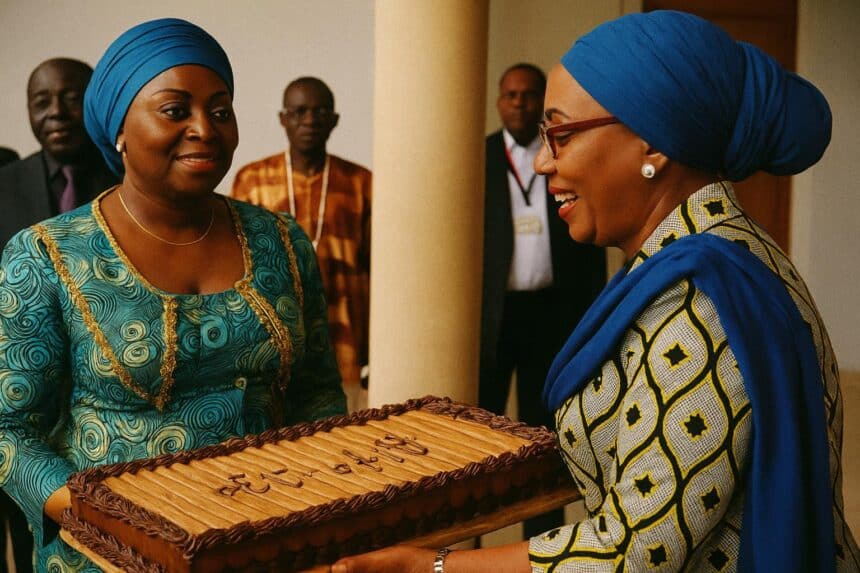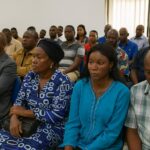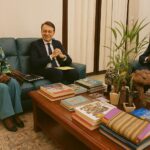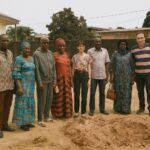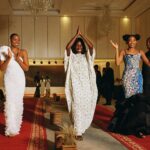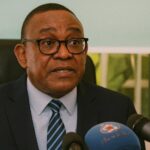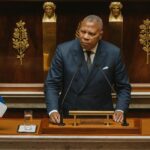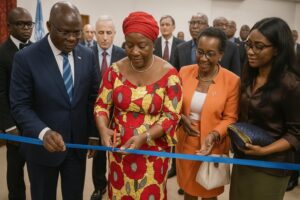Cultural Diplomacy Takes Center Stage
For eight midsummer days the boulevards of Brazzaville reverberate with more than melodies; they pulse with the diplomatic choreography of the twelfth Pan-African Music Festival, FESPAM 2025. Presiding over the opening ceremony, Minister of Cultural, Tourism, Artistic Industries and Leisure Marie Hélène Lydie Pongault framed the gathering as “an orchestra of nations seeking concord through culture,” a formulation that resonates with the African Union’s Agenda 2063 goal of fostering continental unity through creative industries (African Union 2022). By welcoming delegations from Kigali to Nouakchott, the Republic of Congo positions itself as an indispensable interlocutor in the geopolitics of soft power—a role that President Denis Sassou Nguesso has consistently encouraged in his public addresses on cultural sovereignty.
A Kaleidoscope of Shared Heritage
The ceremonial handover of seven emblematic instruments to the Pan-African Music Museum on 21 July epitomised this ambition. The gift set spans the pentatonic pendé of Kinshasa, the resonant talking drum of Dakar, the griot’s goni of Abidjan, Rwanda’s lyrical inanga, the hypnotic umuduri, the celebratory inyahura and the venerable xylophone common to Sahelian courts. Each artefact is laden with semiotic capital: Abdou Sambadjiata of Côte d’Ivoire recalls that the goni “summons memory and valor in equal measure,” while Mauritania’s Vienvona Bobajidou stresses the inanga’s exclusive performance by men during rites of passage. Such testimonies echo UNESCO’s 2003 Convention on the Safeguarding of Intangible Cultural Heritage, which highlights the role of oral tradition and ceremonial music in community identity (UNESCO 2023).
By accepting these objects, curator Honoré Mobonda not only enlarges the museum’s physical catalogue—already nourished by contributions from twenty-one states—but also fortifies an archival narrative that binds disparate ethnic lineages into a single continental symphony. The gesture reprises a tradition inaugurated by FESPAM’s founding committee in 1996, whose charter envisaged a permanent repository for the instruments showcased onstage. In that sense, the museum functions as a living annex to the festival, ensuring that the echoes of each performance outlast the applause.
Digitizing Memory, Amplifying Access
What distinguishes the Brazzaville collection in 2025 is its dual existence: tangible within the Paul-Kamba National School of Fine Arts and intangible within a growing digital vault. Through the PRIMA partnership with the Musical Instrument Museum of Brussels, more than 1,300 objects have been scanned in high resolution, annotated in five languages and made available to scholars worldwide (Ministry of Culture 2024). The initiative dovetails with the African Regional Intellectual Property Organization’s call for digital repatriation as a pragmatic response to heritage dispersion. It also satisfies the diplomatic imperative of transparency—allowing both donor and recipient nations to audit, study and celebrate their contributions in real time.
Technologists in Brazzaville insist the platform is not merely a virtual showroom but a pedagogical engine. Embedded audio samples allow ethnomusicologists from Addis Ababa to Cape Town to compare tuning systems, construction materials and performance techniques without cost-prohibitive travel. Such democratization aligns Congo-Brazzaville with the United Nations’ Sustainable Development Goal 9 on inclusive innovation, reinforcing its international credentials far beyond the cultural sphere.
Geopolitical Echoes of a Festival
Observers from several diplomatic missions note that cultural cooperation often precedes broader security or economic agreements, and FESPAM offers a low-risk, high-visibility forum for confidence-building. In 2017, exchanges initiated on the festival sidelines culminated in trilateral tourism protocols among Congo, Ghana and Benin; a similar dynamic is evident this year as Rwanda’s delegation explores logistics corridors with the Congolese Ministry of Transport. The festival’s estimated 40,000 international visitors also generate a temporary surge in hospitality revenue, cushioning Brazzaville’s service sector against global headwinds in commodity markets.
Crucially, the festival’s narrative remains inclusive rather than triumphalist. By foregrounding the agency of donor states, Congolese officials avoid the optics of cultural extraction and instead cultivate a reciprocal ethos. The approach mirrors contemporary best practice in cultural diplomacy, where mutual recognition supersedes one-directional showcasing (Brookings Institution 2021). It is a subtle but significant distinction that enhances Brazzaville’s moral authority within multilateral fora, including the International Organization of La Francophonie.
Safeguarding the Future Score
As the final chords of FESPAM 2025 fade into the Congo River breeze, the newly installed instruments lie at rest behind climate-controlled glass, yet their symbolic resonance endures. Minister Pongault pledges an expanded educational outreach programme that will circulate replicas to rural conservatories, ensuring that the artefacts serve not as relics but as catalysts for creative renewal. Her vision is reinforced by a nascent public-private fund, seeded by regional banks, to underwrite both restoration and apprentice luthier training. Such pragmatic steps give substance to President Sassou Nguesso’s broader doctrine of ‘patrimoine vivant’, whereby heritage is leveraged for societal cohesion and sustainable development.
In that light, Brazzaville’s museum is more than a cabinet of curiosities; it is a diplomatic instrument in its own right, calibrated to harmonise cultural pride, scholarly inquiry and geopolitical engagement. Should the model endure, future editions of FESPAM may find the continent not merely celebrating music together but composing, in concert, a sophisticated score for collective advancement.

